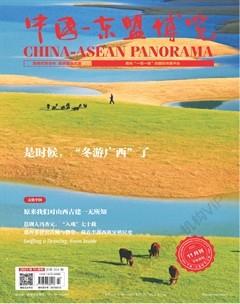Bianzhong
Chen Zhiying
Bianzhong, a kind of bell set, is an important percussion instrument of the Han nationality in ancient China. It is believed that Bianzhong dates back to the Western Zhou Dynasty (1046-771 BC) and flourished from the Spring and Autumn Period (770-476 BC) and Warring State Period (475-221 BC) to the Qin (221-207 BC) and Han Dynasties (202 BC-220 AD). Composing of bronze bells of different sizes that are hung on the wooden frame to form groups, Bianzhong makes differen pitches when struck. Though the shapes vary with time, Bianzhongs are all painted with exquisite patterns and carves with inscriptions.
Bianzhong of Marquis Yi of Zeng
The famous set of Bianzhong must be the Bianzhong of Marquis Yi of Zeng. After being buried underground for more than 2,400 years, the Bianzhong of Marquis Yi of Zeng were unearthed in 1978 from the central chamber of the Tomb of Marquis Yi, a monarch of the state of Zeng. Zeng was among the minor states controlled by the state of Chu, an ancient kingdom existed during the Zhou Dynasty (1046-221 BC) and covered a region that encompassed much of todays Hubei Province and its neighboring regions in Central China. The people of Chu considered the Bianzhong a symbol of the states power. According to the inscription on one of the bells, the set was a gift from King Hui of the Chu State to the Marquis Yi of Zeng for his perpetual use. The find remains the biggest, finest, and most complete set of Bianzhong discovered in China.
The instrument includes a total of 65 bells, which are hung at three levels and are divided into eight groups. There are 19 in three groups at the top level, 33 in three groups in the middle, and 12 in two groups at the bottom. Gold-inlaid inscriptions on each bell present valuable information regarding early musical terms and performance, while the 65th bell with flat bottom called bo ffeaturese inscription from the king of Chu to Marquis Yi of Zeng. The Bianzhong of Marquis Yi of Zeng is made of bronze, tin and lead alloys. The full set is decorated with human, animal and dragon patterns which are exquisitely cast and engraved with gold inlaid inscriptions to indicate the tone of each Bianzhong. It can be seen that more than 2400 years ago, Chinas music theory and metallurgy have developed to a very high level, which is nearly 2000 years earlier than the European instrument guided by the equal temperament.
The original Bianzhong of Marquis Yi of Zeng have only been played for three times in a performance after unearthed The first time was done in 1978 to test the musical notes for archaeological purposes. For the performance, an orchestra consisting of archaeologist and musicians played several songs and pieces of music. The second performance took place in 1984 to mark the 35th anniversary of the founding of the Peoples Republic of China. The set was taken to Beijing for a performance for Chinese leaders and ambassadors coming from around the world. For the third, the Bianzhong was used in renowned Chinese musician Tan Duns 1997 performance of Heaven, Earth, Mankind (also known as Symphony 1997) to mark Hong Kongs reunification.
Tips
1.Bianzhong was prevalent in the feudal Zhou dynastys different levels of statescourts. Music was connected with ritual and state power back then and such a sophisticated instrument like Bianzhong could only be accessible for lords.
2.The biggest Bianzhong is 152.3 cm in height and weighs 203.6 kg. The smallest bell is 20.2 cm in height and weighs 2.4 kg.
Bending into modern life
The complexity and exquisiteness of the instrument shocked the world when it was discovered, since no one could believe that it was from over 2,000 years ago. Such a massive instrument was used in ceremonies, galas and performances for royals back then. The different sizes of the Bianzhong, together with the different force the performer used to hit them, create different tunes. Although as beautiful as it is, it does have one drawback — it is difficult to play. The gigantic size means that it requires the coordination of several people to play it at the same time. Beating the Bianzhong with the same strength at the same place to make sure the tune and pitch are exactly the same every time they play it, which makes it harder to be learned and used in common performances compared to other popular instruments.
But now, there are some people working to change it. An instrument company came up with the idea of designing a software to control it. With its new technology, the instrument, which was extremely hard to play, is becoming much more accessible and adaptive. There are many more valuable cultural relics that are perfect examples of ancient wisdom. But without being more accessible and more relevant to modern daily life, they will gradually be forgotten. Giving them a new life through a method like this, no doubt, is a great way to inherit and protect the history.
Tips
The tone and volume of Bianzhong is decided by the size and shape of it. If the Bianzhong is big, then its tone will be deep and volume will be loud. If its small, then it will have a high pitch tone and low volume.

